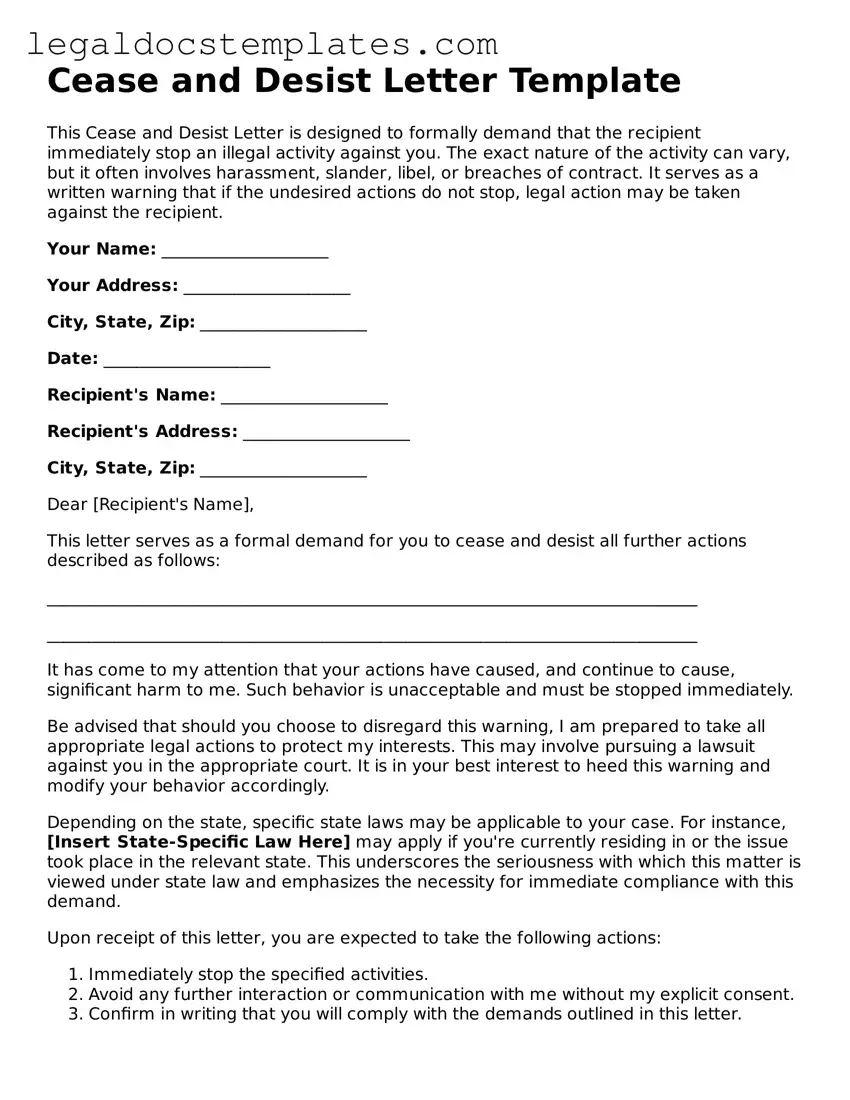Cease and Desist Letter Template
This Cease and Desist Letter is designed to formally demand that the recipient immediately stop an illegal activity against you. The exact nature of the activity can vary, but it often involves harassment, slander, libel, or breaches of contract. It serves as a written warning that if the undesired actions do not stop, legal action may be taken against the recipient.
Your Name: ____________________
Your Address: ____________________
City, State, Zip: ____________________
Date: ____________________
Recipient's Name: ____________________
Recipient's Address: ____________________
City, State, Zip: ____________________
Dear [Recipient's Name],
This letter serves as a formal demand for you to cease and desist all further actions described as follows:
______________________________________________________________________________
______________________________________________________________________________
It has come to my attention that your actions have caused, and continue to cause, significant harm to me. Such behavior is unacceptable and must be stopped immediately.
Be advised that should you choose to disregard this warning, I am prepared to take all appropriate legal actions to protect my interests. This may involve pursuing a lawsuit against you in the appropriate court. It is in your best interest to heed this warning and modify your behavior accordingly.
Depending on the state, specific state laws may be applicable to your case. For instance, [Insert State-Specific Law Here] may apply if you're currently residing in or the issue took place in the relevant state. This underscores the seriousness with which this matter is viewed under state law and emphasizes the necessity for immediate compliance with this demand.
Upon receipt of this letter, you are expected to take the following actions:
- Immediately stop the specified activities.
- Avoid any further interaction or communication with me without my explicit consent.
- Confirm in writing that you will comply with the demands outlined in this letter.
Please understand that this letter is my first step towards a peaceful resolution. I reserve the right to pursue any legal remedies available without further notice to you if there is any continued infringement on my rights.
If you have any questions or wish to discuss this matter further to avoid legal action, please contact me directly at [Your Phone Number] or [Your Email Address].
Sincerely,
____________________
[Your Name]
